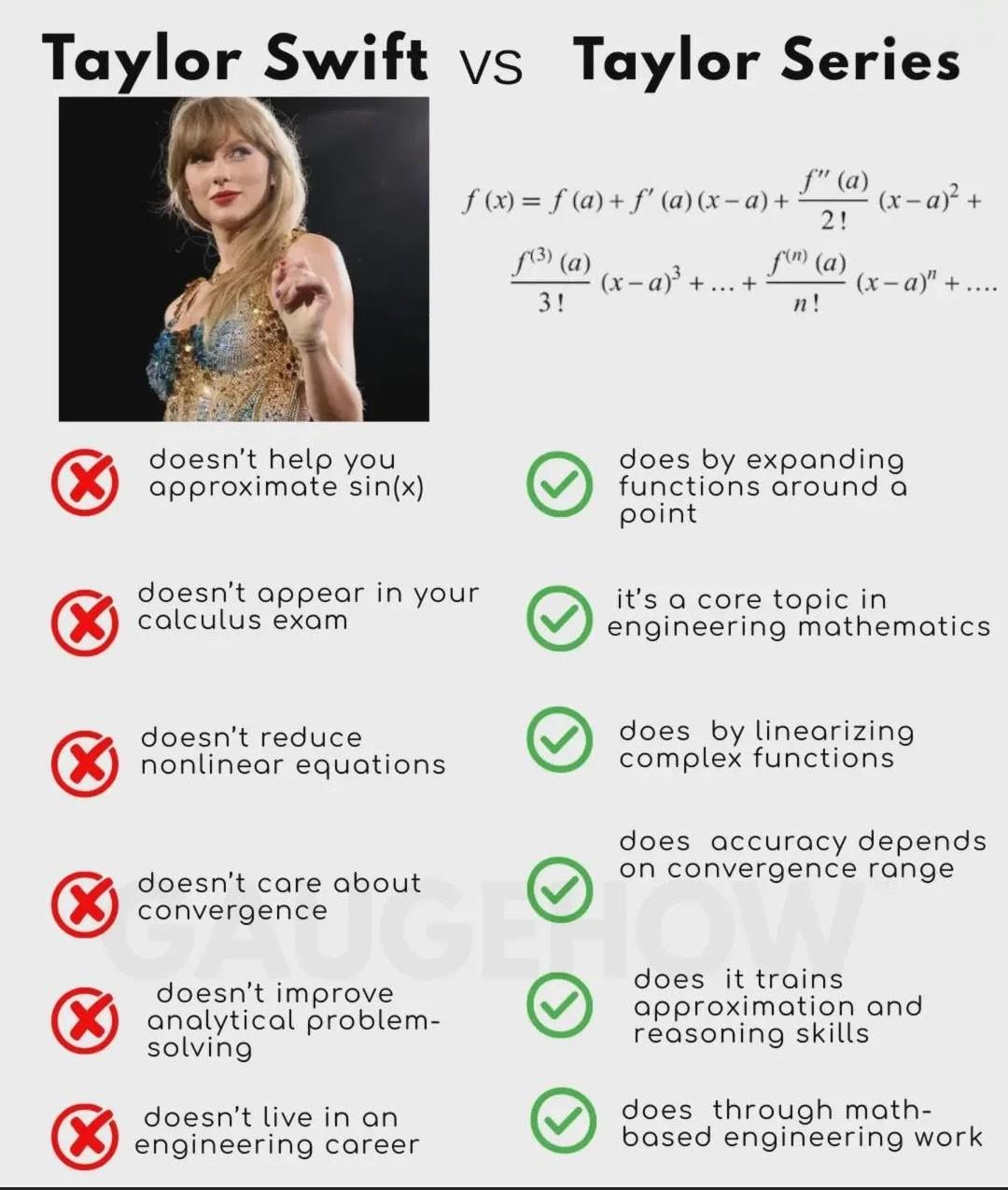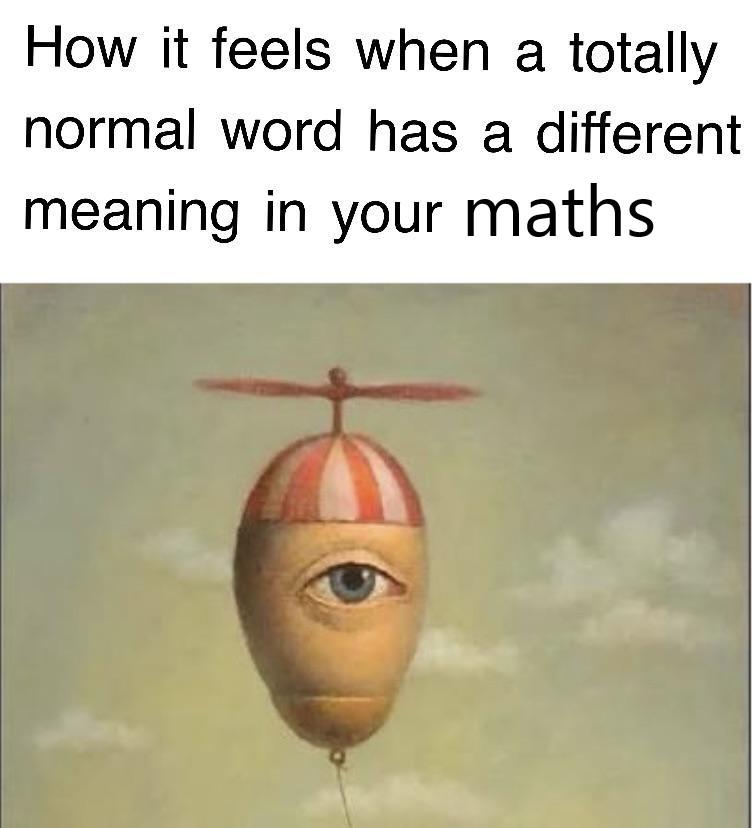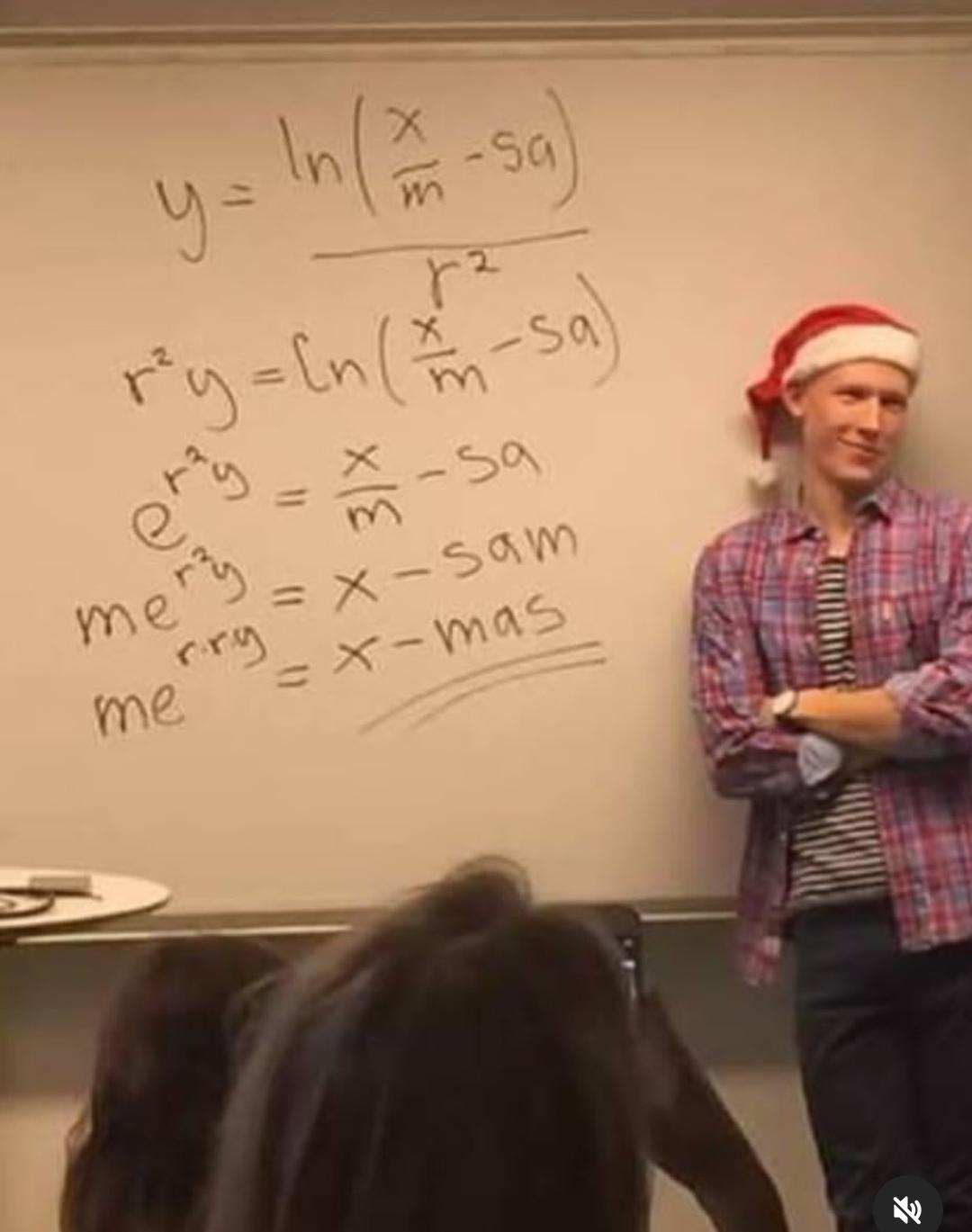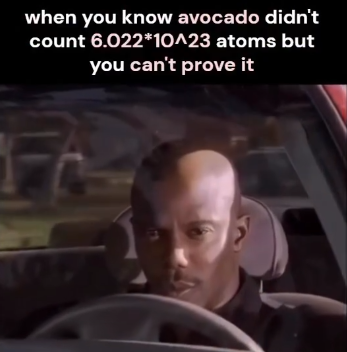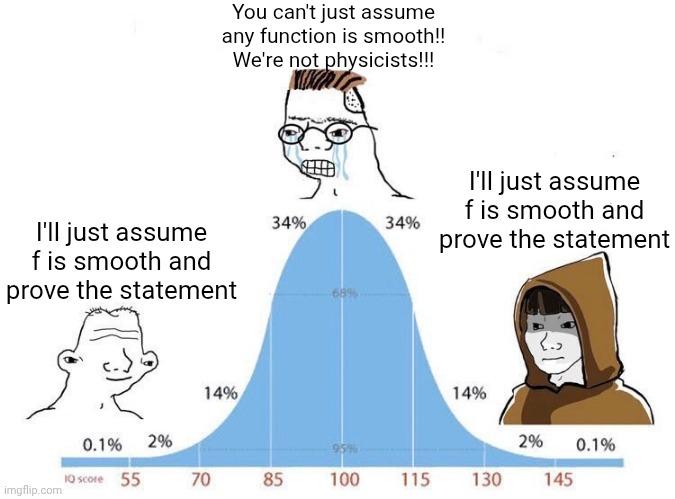Calculus nerds have found their ultimate crossover episode! The meme brilliantly pits pop star Taylor Swift against the mathematical Taylor Series, and the results are *infinitely* clear. While Swift might dominate the charts, she can't help you approximate sine functions or reduce those pesky nonlinear equations. Meanwhile, the Taylor Series is out here expanding functions around points like it's no big deal, showing up on your calculus exam, and training your analytical reasoning skills. The Taylor Series (that beautiful summation formula) lets mathematicians approximate complex functions using polynomials - basically the mathematical equivalent of having backup dancers make you look good. Just remember its effectiveness depends on the convergence range, unlike Swift's range which consistently hits those high notes. Next album idea: "Taylor's Version (Expanded Around a Point)"


 Academia
Academia
 Ai
Ai
 Astronomy
Astronomy
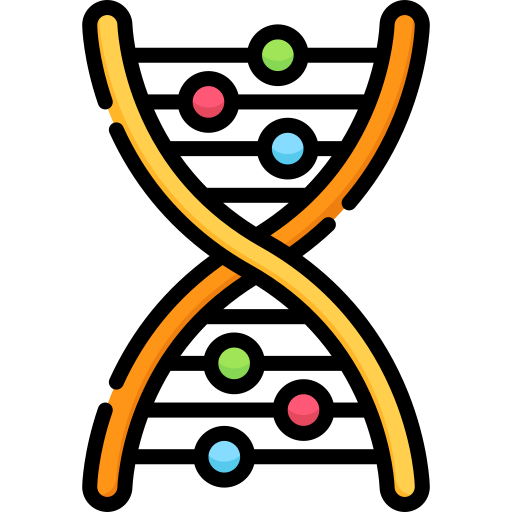 Biology
Biology
 Chemistry
Chemistry
 Climate
Climate
 Conspiracy
Conspiracy
 Earth-science
Earth-science
 Engineering
Engineering
 Evolution
Evolution
 Geology
Geology
